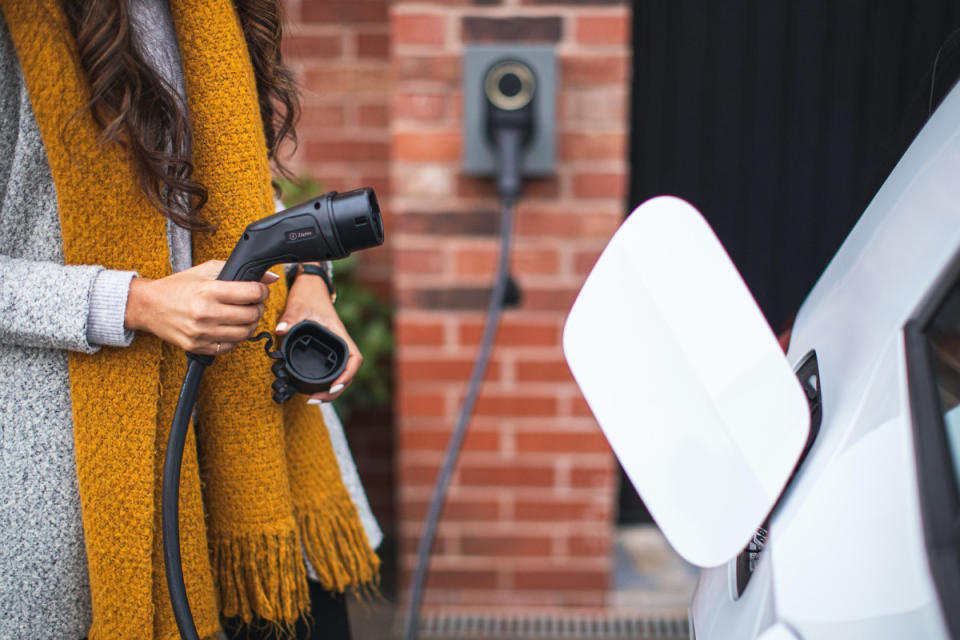How to Improve Energy Efficiency With HEMS and Smart Tech
This time of year, heating and cooling systems are put to the ultimate test, straining to accommodate fluctuating outdoor temperatures. "In our recent survey, 86% of U.S. consumers stated that increasing utility bills is their top concern should climate change continue to drive temperature increases," shared Michael Lotfy Gierges, EVP of Home & Distribution, Schneider Electric. "For those looking to make an impact in their homes, energy efficiency is the key." Improving the energy efficiency inside your home goes beyond maintaining your air conditioner, reducing heat loss by sealing air leaks in attic vents, and changing dirty air filters. Taking the right steps in your home can improve your finances, and help homeowners gain peace of mind in knowing that their home systems are working smartly and sustainably on their behalf.
Here are the top 5 energy-efficient solutions to consider as the weather gets warmer:
1. Monitor Energy Use
"This may seem like a new concept to many, but having full control and visibility into energy usage is the future of our homes," shares Gierges. "We found that only 14% of US homes surveyed are equipped with smart energy monitors, yet this home tech saw the biggest growth in popularity with +6% vs. responses from our 2021 survey."
There are countless benefits to embracing a home energy monitoring systems (HEMS), but most of all, these smart energy-saving systems can be managed remotely via app, giving users ultimate control over how and when their home uses energy, especially in their absence.
The tools also raise awareness for the amount of energy certain appliances in their homes are using. "Heating, for example, accounts for up to 65% of home energy consumption," he adds, though it's important to keep in mind that the tools also make it easier to perform an energy audit outside of the colder months. "Using monitoring systems to intelligently auto-adjust to external temperature fluctuations will only help efforts in the long run."
Related: 10 Smart Home Devices We’re Obsessed With This Year
2. Electrify Devices and Energy Loads Where Possible
"The world is moving towards electrification as it is the only energy that we can decarbonize by replacing traditional grid with renewables," notes Gierges."[It's] the most sustainable energy source available to us."
It helps that modern electrical devices are more energy efficient than ever. Making sure that your home keeps up with the changes in technology is really important. You don't have to look to solar energy to make a difference; there are a variety of energy saving options that make a difference in your monthly energy bills. "Replace old over-consuming appliances with A or B-graded energy efficiency appliances," adds Gierges. "This is true for all appliances, from big appliances like washing machines and kitchen ventilation fans to programmable thermostats that help you optimize your indoor temperature settings." Plus, the cost of LED bulbs has dropped so much over the last decade, there's almost no excuse for hanging onto those incandescent lights.

Nanoleaf

Photo by Zaptec on Unsplash
3. Digitize and Connect Devices
"If a homeowner works towards electrifying all devices in their home, connectivity is the next logical step in this sustainability and efficiency journey," shares Gierges. And, boy, do we feel that. Transforming our home into a smart hub was one of the best things we've done. "By connecting devices, the power sources can work dynamically together. For example, homeowners can program a smart thermostat system that heats during the daytime but allows home energy to switch to support light switches at night. It can also know to switch unnecessary lights off at times when everyone is out of the home. Vampire devices can be monitored and controlled simply by plugging them into connected sockets, which allow you to turn them on or off easily."
If you set out to digitize your routine, be sure to consider the natural light available in your home, and rooms hit with direct sunlight. You can plan outdoor lightbulbs or spotlights that only activate at night. Smart shades and devices can make indoor living more efficient, too.
Related: What Are Vampire Devices?
4. Use AI to Smart Control Major Loads
"For major energy loads like heating and cooling systems and electric vehicle (EV) charging, AI is being integrated to simplify our ever-complex home energy ecosystems." The landscape of artificial intelligence is transforming our day-to-day, AI can support systems and software that’s smart enough to make the most of the power grid. It can charge EVs at night when the cost of energy is lower to operate, and heat and cool when external weather begins to experience rapid fluctuations – a key to being flexible in the face of climate change."
5. Optimize Use of Prosumption
This is a word you probably haven't heard before, but get used to it. "The modern homeowner is taking steps to reduce their impact on the environment and control heating and cooling costs through sustainable energy solutions. Many are becoming Prosumers," shares Gierges. He goes on to describe the rapidly growing group of consumers fixated on energy waste. "Prosumers are folks who are not only consuming energy but producing renewable energy at the same time. Renewable energy solutions like solar panels can store energy for later usage, giving homeowners a nearly immediate return on investment. By producing this storable energy, homeowners can rest assured they are prepared for unexpected outages while sustainably contributing to the grid."

